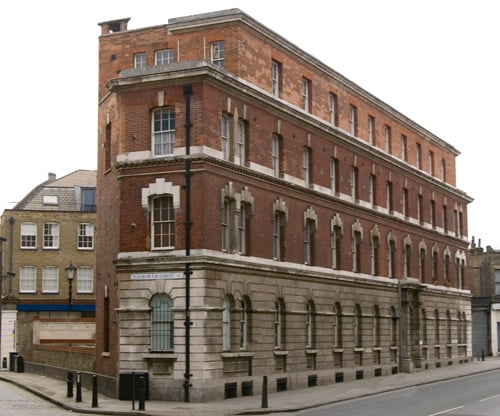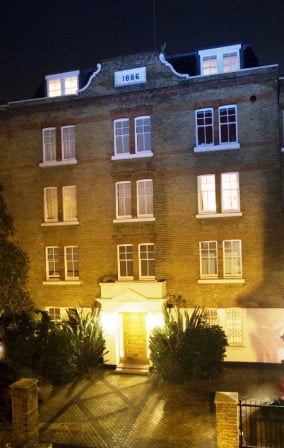By the 11th August 1888 the victim of the murder in George-yard had still not been formally identified, albeit some people had come forward to suggest that they did know who she was. On Saturday 11th August 1888, The East London Advertiser informed its readers that:-
“The woman is unknown in the neighbourhood, and up to the present time has remained unidentified, although some persons have come forward stating that they know her, one identifying her as Martha Turner, a single woman, of 4, Star-place, Commercial-road. But as the evidence on this point is contradictory and uncertain, who deceased is remains unknown.”
FIRST NEWS OF THE MURDER
The paper also gave a little more detail as to the circumstances surrounding the finding of the woman’s body:-
“The first intimation that there was something wrong reached Commercial-street Police station about 6 o’clock on Tuesday morning.

It appears that a working man named John Saunders Reeves who lives at 37, George Yard-buildings – which are model dwelling houses – was coming downstairs about ten minutes to five to go to work when he discovered the body of a woman lying in a pool of blood on the first floor landing.
He at once called police constable Barrett, 26 H, who was on his beat in the vicinity, and Dr. Keeling of Brick Lane was sent for, and promptly arrived. He made an examination of the woman and pronounced life extinct, giving it as his opinion that she had been brutally murdered, there being knife wounds on her breast, stomach, and abdomen.”
THE MURDER SITE IN 1888
The newspaper also provided its readers with a little more information about the nature of the surroundings in which the body had been found:-
“George-yard is a narrow turning out of the High-street, and it leads into a number of courts and alleys in which some of the poorest of the poor, together with thieves and roughs and prostitutes, find protection and shelter in the miserable hovels bearing the name of houses.”

The article also made mention of George Holland’s Mission which was located at the southern end of George Yard in a building that still exists today and which we pass night after night on our regular walking tour of Jack the Ripper’s London.
“Amongst such ill-favoured conditions Mr. Holland has laboured for years, trying by means of his evangelistic mission to raise and elevate the moral and social life of the inhabitants of the district.”
THE INQUEST HAD OPENED
The inquest into the woman’s death had been opened two days before but, as The Eastern Post and City Chronicle reported there was still some confusion as to the identity of the murdered woman:-
“On Thursday, Mr. George Collier, the deputy coroner for south-east Middlesex, opened an inquiry at the Working Lads’ Institute, Whitechapel, on the body of Martha Turner, aged 35, a single woman, lately living at 4, Star Place, Commercial Road, who was found lying on the landing of George Yard Buildings, on Tuesday morning last, with over 30 stabs about her body.
STILL NOT 100% SURE OF HER IDENTITY
Prior to calling the first witness the coroner said the body had been identified that morning, but he had just been informed that two other persons also identified it as quite a different person, and under those circumstances he thought the question of identity had better be left till the last…”
ALFRED CROW’S TESTIMONY
Giving evidence at the inquest, Alfred George Crow, a cab-driver who lived at number 35 George Yard-buildings, stated that he had arrived home at around 3.30am on the morning of the murder and had ascended the staircase, which was dark at the time since all the lights had been extinguished.
However, since he was possessed of “good eyesight” he did see someone lying on the first floor landing as he made his way up to his dwelling.
Interestingly, he told the Coroner that it wasn’t that unusual for him to come across people sleeping on the landings of the block, so he did what he always did and ignored the prone form and continued home to bed.
DR KILEEN’S EVIDENCE AND OPINION
Dr Timothy Kileen, the doctor who had been called to the scene by the police, and who had examined the body as it lay on that first floor landing, was asked by the Coroner if there had been any sign of recent “connexion” (a polite euphemism for sexual intercourse).
He replied that he had observed absolutely no signs of “connexion.”
Kileen then expressed the opinion that the wounds were caused by a knife, “or some such instrument, but there was a wound on the chest bone which could not have been caused by a knife. An ordinary penknife could have made most of the wounds, but the puncture in the chest must have been made with a sword bayonet or a dagger.”
WAS KILLER LEFT OR RIGHT HANDED?
He was also certain that the woman was still alive when the majority of the wounds had been inflicted upon her, but he could not tell the coroner for certain whether “the wounds were made by a right or left-handed person. He thought, he said, that one of the wounds “might have been made by a left-handed man, but not the others.”
Concluding its report on the inquest into the woman’s death The East London Advertiser informed its readers that the police would continue “to make inquiries and endeavour to ascertain her proper name.”
IN CONCLUSION
Summing up, the newspaper reported that:-
“The main object of that inquiry was to ascertain the cause of death, and afterwards to find out who was the cause of death.
For that purpose the case would be left in the hands of Inspector Reid, who would use every endeavour to trace the perpetrator of this dreadful outrage.”
A PERFECT SAVAGE
Few of those present at the inquest could have disagreed with the Assistant Coroner’s comment that:-
“It was one of the most shocking things one could possibly imagine. The man who could have inflicted 39 wounds on a poor defenceless woman must have been a perfect savage,…”
But, with no further information being presented in respect of who had committed the murder, Collier decided that he had little option but to adjourn the inquest for two weeks for the purpose, he stated:-
“…of giving the police time to investigate the matter and bring the murderer to justice, he would adjourn the inquiry for a fortnight.”The usual formalities were then gone through and the inquest was adjourned.”
